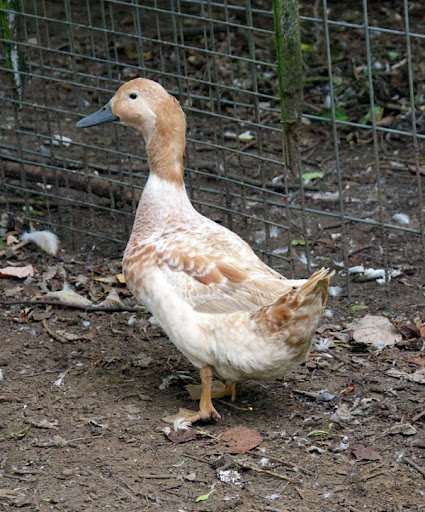Overberg Duck

Scientific Name
Anas platyrhynchos domesticus
Alternative Names
Overberg Duck, Overburg Duck
Measurements
| Feature | Male (Drake) | Female (Duck) |
|---|---|---|
| Weight | 2.25–2.50 kg (5–5.5 lb) | 2.00–2.25 kg (4.5–5 lb) |
| Eggs per Year | 180–200 | 180–200 |
| Egg Weight | 65 g | 65 g |
Status
Not yet standardized. Rare and mainly seen in the Netherlands and Britain.
Origin
The Overberg Duck was developed in the Netherlands near the National Poultry Museum. It was created through selective breeding, likely using Abacot Rangers, Welsh Harlequins, and the hardy Dutch Hook Bill. It resembles a blue-toned Welsh Harlequin and was bred as a good utility duck for both eggs and meat.
Identification
Overberg Ducks have an alert, slightly upright posture. The head is carried high, and the back slopes gently with the body and belly nearly parallel. The neck is medium in length, held almost upright. Plumage is tight and silky. Drakes are more upright and have visible sex curls on the tail.
Voice
Soft quacks from ducks and low raspy sounds from drakes. Not overly noisy.
Diet
They are active foragers, eating insects, plants, slugs, snails, and garden pests. They also eat grains and standard duck feed.
Distribution
Mainly found in the Netherlands and the UK among duck breeders and hobbyists.
Habitat
Well-suited for gardens, small farms, and grassy areas with access to water. Calm and domesticated but active.
Breeding
Overbergs lay around 180–200 white eggs a year. They go broody and can raise their own ducklings. Best kept in pairs or trios.
Wintering
Hardy and able to handle cooler climates. Shelter is recommended in harsh winter conditions.
Behaviour
Active, alert, and good foragers but tame and easy to manage. Rarely fly. Males can be slightly overactive in breeding season.
Conservation
Not standardized and still rare. Needs more breeders to preserve the breed.
